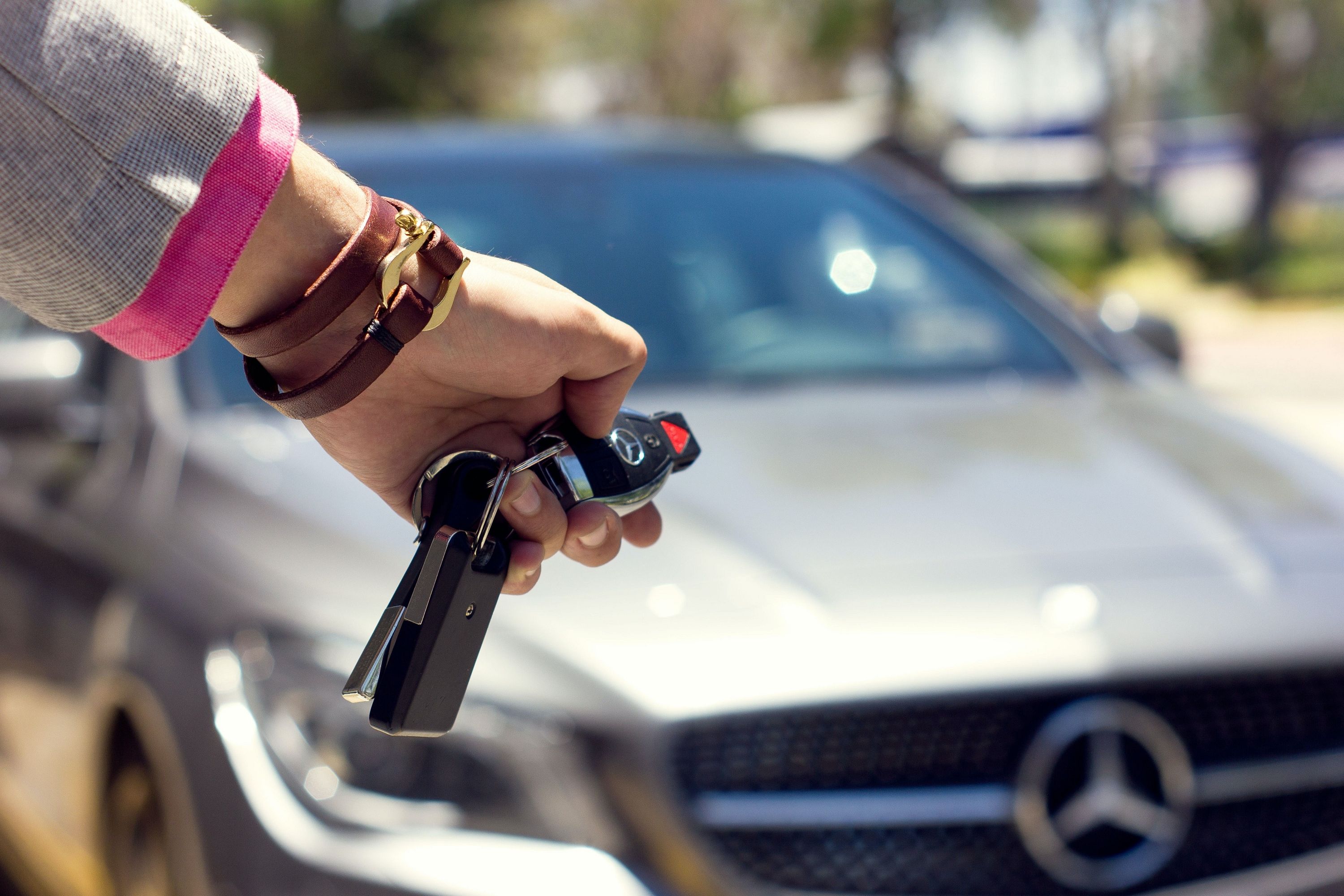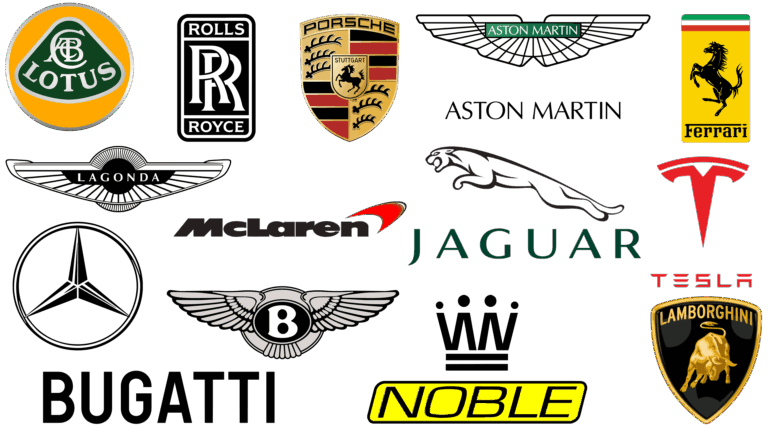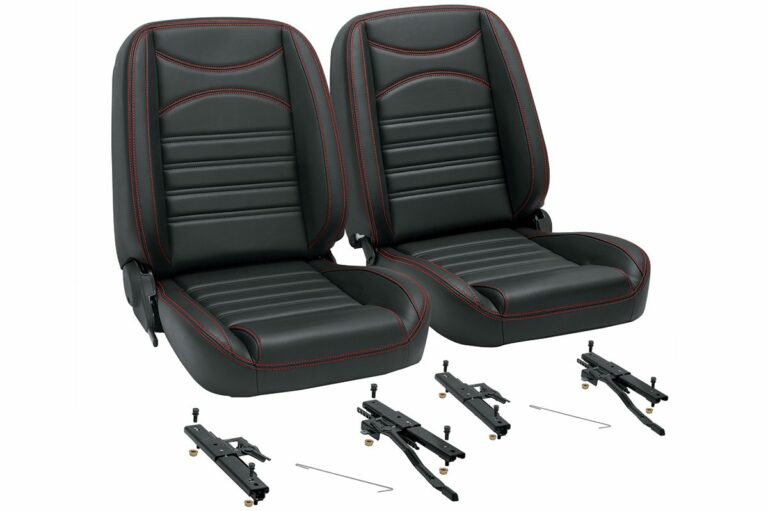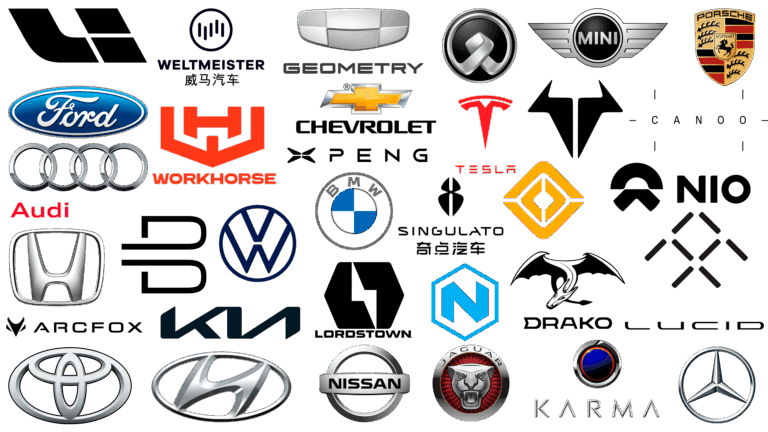Most Difficult Car Brands To Repair: Navigating the Complexities of Automotive Service
Most Difficult Car Brands To Repair: Navigating the Complexities of Automotive Service cars.truckstrend.com
Owning a car is a significant investment, and while the initial purchase price is a major consideration, the ongoing costs of maintenance and repair often catch owners by surprise. Beyond the standard oil changes and tire rotations, certain car brands are notoriously more challenging, and consequently, more expensive, to repair than others. Understanding what makes a car brand "difficult to repair" is crucial for prospective buyers and current owners alike, impacting everything from your annual budget to your vehicle’s long-term reliability and resale value.
Repair difficulty isn’t just about how often a car breaks down; it encompasses a range of factors including the complexity of its engineering, the availability and cost of parts, the need for specialized tools and diagnostic equipment, and the expertise required from technicians. In an era of increasingly sophisticated automotive technology, from intricate electronic systems to advanced lightweight materials, the gap between easy and difficult repairs is widening. This article delves into the brands that often top the list for repair complexity, exploring the underlying reasons and offering practical advice for navigating these challenges.
Most Difficult Car Brands To Repair: Navigating the Complexities of Automotive Service
The European Luxury & Performance Conundrum: BMW, Mercedes-Benz, Audi, Porsche
When discussing difficult-to-repair vehicles, European luxury and performance brands frequently come to mind. While renowned for their driving dynamics, sophisticated interiors, and cutting-edge technology, this very complexity often translates into higher repair bills and longer service times.
- Intricate Engineering and Design: Brands like BMW, Mercedes-Benz, Audi, and Porsche pride themselves on precision engineering. This often means tightly packed engine bays, multi-link suspension systems, and highly integrated electronic components. What might be a simple sensor replacement in a domestic car could require significant disassembly and specialized calibration in a German luxury vehicle.
- Proprietary Diagnostic Tools and Software: Modern vehicles are essentially computers on wheels. European luxury brands often use proprietary diagnostic software and tools that are exclusive to their dealerships or highly specialized independent shops. Generic OBD-II scanners might read basic codes, but in-depth troubleshooting and module programming often necessitate manufacturer-specific equipment, which is expensive to acquire and maintain.
- Specialized Training and Expertise: Technicians working on these vehicles require extensive, often manufacturer-certified, training. This ensures they understand the intricate systems and can perform repairs correctly without inadvertently damaging other components. Finding such highly skilled mechanics outside of dealerships can be challenging in some areas.
- Expensive and Scarce Parts: Parts for these vehicles are typically more expensive than those for mass-market cars. Many components are manufactured by specific suppliers, often in lower volumes, driving up costs. Lead times for rare parts can also be extended, leaving owners without their vehicles for longer periods.
- Integrated Complex Electronics: From advanced infotainment systems to adaptive suspension and driver-assistance features, these cars are laden with electronics. A single faulty module can sometimes cascade into multiple issues, requiring extensive diagnostics to pinpoint the root cause.

Practical Advice: If you own or plan to own one of these brands, factor in higher maintenance and repair costs. Research reputable independent specialists in your area who specialize in your specific brand; they often offer a cost-effective alternative to dealerships without compromising expertise. Consider purchasing an extended warranty, especially for older models, to mitigate potential high-cost repairs.
The Exotics and Supercars: Ferrari, Lamborghini, McLaren, Aston Martin
At the apex of automotive difficulty are the exotic and supercar brands. These vehicles are designed for extreme performance and exclusivity, making their repair demands extraordinary.
- Bespoke Components and Limited Production: Supercars are often hand-built with custom-fabricated parts that are not mass-produced. This makes obtaining replacement components incredibly difficult, time-consuming, and astronomically expensive. Some parts might even need to be custom-ordered or fabricated, leading to months-long waits.
- Extreme Engineering and Tight Packaging: Every inch of a supercar is optimized for performance. This results in incredibly tight engine bays and chassis designs where components are intricately interwoven, making even seemingly simple tasks like spark plug replacement a multi-hour endeavor requiring engine removal or significant disassembly.
- Ultra-Specialized Technicians: Mechanics working on these vehicles are not just certified; they are often factory-trained and have years of dedicated experience with specific models. Their hourly rates reflect this unparalleled expertise, and their numbers are few.
- Safety and Liability: Working with high-performance engines, advanced aerodynamics, and unique structural components requires extreme caution and adherence to manufacturer protocols to ensure the vehicle’s integrity and safety are maintained.


Practical Advice: Ownership of these vehicles typically implies an understanding and acceptance of their extreme running costs. Maintaining a strong relationship with a certified dealer or a highly reputable, specialized independent shop is non-negotiable. Budgeting for repairs that can easily run into five figures is part of the ownership experience.
The Electric Revolution: Tesla and Advanced EVs
The rise of electric vehicles (EVs) introduces a new paradigm of repair difficulty, particularly with pioneering brands like Tesla. While EVs have fewer moving parts than internal combustion engine (ICE) vehicles, their unique architecture presents distinct challenges.
- High-Voltage Systems: EVs operate on high-voltage battery systems (400V-800V), posing significant safety risks if not handled by trained professionals. Specialized tools, insulated equipment, and strict safety protocols are mandatory for any work involving the battery or power electronics.
- Proprietary Software and Diagnostics: Tesla, in particular, is known for its highly integrated software ecosystem. Diagnostic tools are proprietary, and access to repair manuals and parts is often restricted to authorized service centers. This limits the ability of independent shops to perform complex repairs.
- Integrated Battery Packs and Body Structure: Battery packs are often integral to the vehicle’s structural integrity. Damage to the battery enclosure, even from minor accidents, can necessitate expensive and complex repairs or even full battery replacement. Tesla’s use of "Gigacasting" for structural components also means collision repairs can be more involved, sometimes requiring replacement of large cast sections.
- Limited Independent Repair Network: The technology is relatively new, and the training and equipment required are substantial, meaning fewer independent shops are equipped to handle complex EV repairs compared to ICE vehicles.
Practical Advice: For EV owners, especially those with newer, highly integrated models, relying on manufacturer-certified service centers is often the safest and most reliable option for significant repairs. Keep abreast of software updates, as these can sometimes impact vehicle performance and repair procedures.
General Factors Contributing to Repair Difficulty
Beyond specific brands, several overarching trends contribute to the increasing difficulty of automotive repair across the board:
- Tight Packaging and Miniaturization: Modern vehicles pack more components into smaller spaces, making access for repairs incredibly challenging. What was once easily accessible might now require removing multiple other components.
- Proprietary Software and Locked Systems: Many manufacturers are increasingly locking down their vehicle’s software and diagnostic ports, limiting independent mechanics’ ability to troubleshoot and repair issues without expensive subscriptions or specialized tools.
- Specialized Tools and Equipment: Repairs often require more than basic wrenches. Torque-to-yield fasteners, specialized pullers, alignment jigs, and advanced calibration equipment are now commonplace.
- Advanced Materials: The use of lightweight materials like aluminum alloys, carbon fiber, and high-strength steel requires specific repair techniques and equipment, particularly in collision repair, which many general body shops may not possess.
- Lack of Aftermarket Support: For niche models or very new vehicles, the aftermarket parts industry may not have caught up, forcing owners to purchase expensive OEM parts.
Practical Advice and Actionable Insights for Car Owners
Navigating the world of complex car repairs requires a proactive approach:
- Research Before You Buy: Before purchasing any vehicle, especially used luxury or performance models, research common issues and average repair costs. Websites like RepairPal, Consumer Reports, and various owner forums can provide valuable insights.
- Find a Reputable Specialist: For difficult-to-repair brands, seek out independent mechanics who specialize in that particular make. They often have the necessary tools, expertise, and access to parts, potentially at a lower labor rate than a dealership.
- Consider an Extended Warranty: For used luxury or complex vehicles, an extended warranty can be a financial lifesaver, covering unexpected major repairs. Read the fine print carefully to understand what is covered.
- Adhere to Maintenance Schedules: Regular, preventative maintenance, especially according to the manufacturer’s schedule, can prevent minor issues from escalating into major, costly repairs.
- Learn Basic DIY (Carefully): While complex repairs are best left to professionals, learning to perform basic tasks like fluid checks, tire pressure monitoring, and visual inspections can help you identify potential issues early and save on simple labor costs. However, never attempt high-voltage or complex system repairs without proper training and equipment.
- Keep Detailed Service Records: A well-documented service history not only helps your mechanic troubleshoot future issues but also adds significant value when it’s time to sell your car.
Estimated Repair Cost Comparison: Difficult vs. Easier Brands
Below is a representative table illustrating the potential cost disparity for common repairs between generally "easier" (e.g., Honda Civic, Toyota Camry) and "more difficult" (e.g., BMW 3-Series, Mercedes C-Class) car brands. These are estimates and actual costs vary widely based on location, specific model year, parts availability, and mechanic’s labor rates.
| Repair Category | Common Difficult Repair | Estimated Cost Range (Easier Brands e.g., Honda, Toyota) | Estimated Cost Range (Difficult Brands e.g., BMW, Mercedes, Audi) |
|---|---|---|---|
| Engine Components | Spark Plug Replacement (complex engine bay access) | $150 – $300 | $400 – $800+ |
| Engine Sensor Replacement (e.g., O2, MAF) | $200 – $500 | $400 – $1,000+ | |
| Valve Cover Gasket Replacement | $250 – $600 | $600 – $1,500+ | |
| Transmission | Transmission Fluid Service | $150 – $350 | $400 – $800+ (often requires specialized fluid/filter kits) |
| Transmission Solenoid Replacement | $400 – $900 | $800 – $2,000+ | |
| Suspension & Steering | Strut/Shock Replacement (per axle) | $400 – $800 | $700 – $1,500+ (often adaptive/air suspension components) |
| Control Arm Replacement | $250 – $600 | $500 – $1,200+ | |
| Brakes | Brake Pad & Rotor Replacement (per axle) | $300 – $600 | $500 – $1,200+ (often larger, more complex systems) |
| Electrical/Electronics | Battery Replacement (standard 12V) | $150 – $300 | $300 – $600+ (often requires coding/registration) |
| Window Regulator Replacement | $200 – $450 | $400 – $900+ | |
| HVAC | AC Compressor Replacement | $600 – $1,200 | $1,000 – $2,500+ |
| EV Specific | High Voltage Battery Diagnostics/Minor Repair (Tesla) | N/A | $500 – $2,000+ (for diagnostics, module replacement can be far more) |
| Charging Port Repair (Tesla) | N/A | $800 – $1,500+ |
Note: These ranges are illustrative and do not include the cost of major component failures (e.g., engine rebuilds, full transmission replacements, or full EV battery pack replacements), which can run into many thousands or tens of thousands of dollars for difficult brands.
Frequently Asked Questions (FAQ)
Q1: Which car brand is the most difficult to repair?
A1: There isn’t one single "most difficult" brand, as difficulty depends on the specific model and type of repair. However, ultra-luxury exotics like Ferrari, Lamborghini, and McLaren are universally considered the most challenging and expensive due to bespoke parts, extreme engineering, and highly specialized labor. Among more common brands, BMW, Mercedes-Benz, and Audi frequently top lists for their complex electronics, proprietary systems, and expensive parts.
Q2: Are all luxury cars difficult to repair?
A2: Not necessarily all. While many luxury brands (especially European ones) are known for complexity, some, like Lexus (Toyota’s luxury division) or Acura (Honda’s luxury division), often benefit from their parent company’s reputation for reliability and more accessible repair procedures, though they can still be more expensive than their mainstream counterparts.
Q3: Does repair difficulty affect resale value?
A3: Yes, indirectly. Vehicles known for high repair costs or chronic reliability issues often have lower resale values because potential buyers factor in the future ownership costs. Conversely, brands with a reputation for ease of repair and reliability tend to hold their value better.
Q4: Can I save money by doing DIY on these difficult brands?
A4: For minor, non-critical tasks (like fluid checks, tire rotations, or replacing air filters), some DIY is possible. However, for anything involving complex electronics, engine components, high-voltage EV systems, or structural repairs, it is highly recommended to leave it to certified professionals. The risk of causing further, more expensive damage is significant, and specialized tools and diagnostic equipment are often required.
Q5: How can I find a good mechanic for a difficult-to-repair car?
A5: Look for independent shops that specialize in your specific brand (e.g., "BMW specialist," "European auto repair"). Check online reviews, ask for recommendations from local car clubs or forums, and ensure they have the necessary diagnostic equipment and certifications. Don’t be afraid to ask about their experience with your specific model.
Q6: Are older models of difficult brands easier to repair?
A6: Generally, yes. Older cars, especially pre-2000s models, tend to have fewer complex electronic systems, more mechanical components, and often more accessible engine bays. Parts for certain classic models can still be rare and expensive, but the diagnostic and labor complexity is often lower.
Conclusion
The landscape of automotive repair is continuously evolving, with increasing complexity driven by technological advancements. While the allure of high-performance and luxury vehicles is undeniable, understanding the potential challenges and costs associated with their repair is paramount. Brands like Ferrari, Lamborghini, BMW, Mercedes-Benz, Audi, and even advanced EVs like Tesla, while offering exceptional driving experiences, demand a significant commitment in terms of maintenance and repair.
By being informed, proactive, and choosing your service providers wisely, you can mitigate some of the financial and logistical burdens associated with owning these intricate machines. Ultimately, the decision to own a car that is difficult to repair is a balance between passion for driving, appreciation for engineering, and a realistic assessment of the total cost of ownership.






